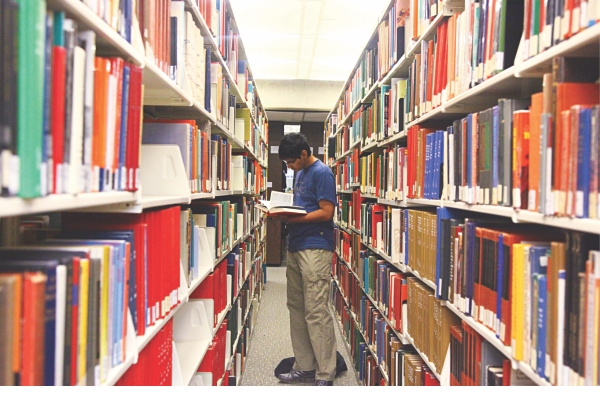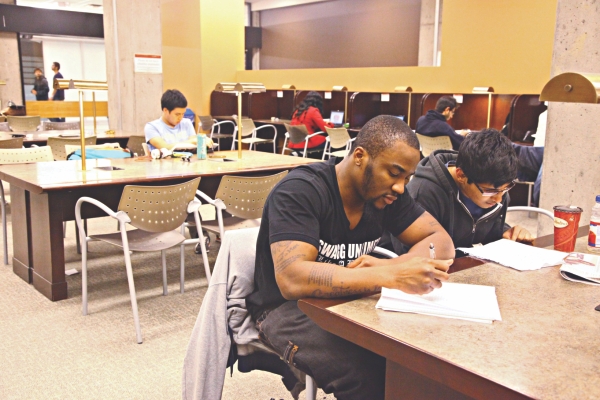|
Going Global
The B-Deshi Series
The Slice of a Struggle
Sabhanaz Rashid Diya
Photos: Sabhanaz Rashid Diya
"I had never imagined life could change so drastically,” muttered 23-year old Avi as he stared down the hall. Students of every shape, size, colour and ethnicity were slowly crowding in, the sound of laughter echoing and classroom doors slamming open and shut. “I transferred from a renowned private university in Dhaka to a Canadian university, much against my own will but under the pressure of my parents and sometimes I wake up and wonder whether I made the biggest mistake of my life.”
Avi, now in his second year and pursuing a Bachelor's degree in Computer Science is one of the thousands of international students who are enrolled to North American universities every year in pursuit of a 'better education.' In 2011 alone, Canada welcomed the highest number of legal immigrants in 50 years, in addition to a stellar 97,147 foreign or international students (Source: Citizenship and Immigration Canada). Unsurprisingly, in spite of a booming private university culture, the number of Bangladeshi students coming each year remains very high. Avi's university, like most other well established Canadian universities boasts an impressive number of Bangladeshi students, although an exact number is difficult to identify.

With the academic pressure, libraries become synonymous to home.
“Studying at a North American university is an expensive investment,” explains Avi as we take a walk down one of the many front lawns. “Very few actually realise this. You come here believing you can make something out of yourself, and suddenly you're counting each penny and tangled in student loans. By the time you graduate, the debt stacks up and you end up at a job, spending years to balance the expenditure with your newfound income. By the time you pay up, you're already too comfortable with your life here to think otherwise.”
“The pressure can be extremely intimidating,” pointed Arshad. A third-year student with a major in mechanical engineering at one of Canada's top schools, Arshad explains how quickly and dramatically everything changes. “The grading scale feels hyperbolic, you don't make an A unless you have a 90%; trust me, professors rarely give you a 90%. Say, if my school admits 1000 students each year, over 200 will drop out by the end of their first year because they can't keep up. Sometimes you don't feel you're cut for a cutthroat academic system as such, especially when you've lived with a 4.0 all your life back home.”
Kevin completed a Bachelor's degree in London before moving to Canada to pursue a second degree. As an international student who has studied in two contrasting yet deceptively similar environments, Kevin feels the quality of education makes a stark difference, in spite of associated and unforeseen difficulties. “The Western way of teaching is highly rewarding and insightful. It is, however, life outside the classrooms that is overwhelming. You're very young, and suddenly responsible for a number of things, dealing with multitude of emotional, financial and social dilemmas. It's easy to lose track of your purpose. I know many students who have fallen to depression, and others who have emerged as stronger, more mature individuals.”

International students are a vibrant addition to any top university.
Yet, the number of international students, particularly Bangladeshis, and the bubbling enthusiasm towards a North American degree seems untampered. An unofficial internal survey indicated majority of South Asian students pursue science or mathematics focused degree in Canadian universities, next to a high percentage who opt for an economics or business major.
“I think that inflow will be constant,” elaborated Tarannum. Tarannum will be completing her Bachelor's in Economics by next year and has already begun looking for jobs. “When I first came here, I was just as overwhelmed and reluctant to accept my surroundings. As I slowly eased in, I began to enjoy my independence. I could travel late at night, be equally respected at all environments and was given a space to pursue my interests. I could have never imagined a life like this back home. Everyone, irrespective of gender, hopes for this freedom and a Western education is a worthwhile escape route.”
This being a slice of a bigger picture, the responses of thousands of Bangladeshis (as international students) who travel to Canada and greater North America are multifaceted and intriguingly contradicting. My experiences while recording their stories have been as overwhelming as theirs and some names have been changed to respect their privacy. As we delve deeper into the issue, it is important to understand the vastness and uniqueness of each story and the intent of this series as means of giving Bangladeshi students studying abroad a voice. This, by no means, reflects upon a generalised scenario and each experience is only a part of a larger, more elaborate and complex sociological picture.
(Sabhanaz Rashid Diya is a major in Media and Communication at Independent University Bangladesh.)
|
Copyright (R) thedailystar.net 2011 |
